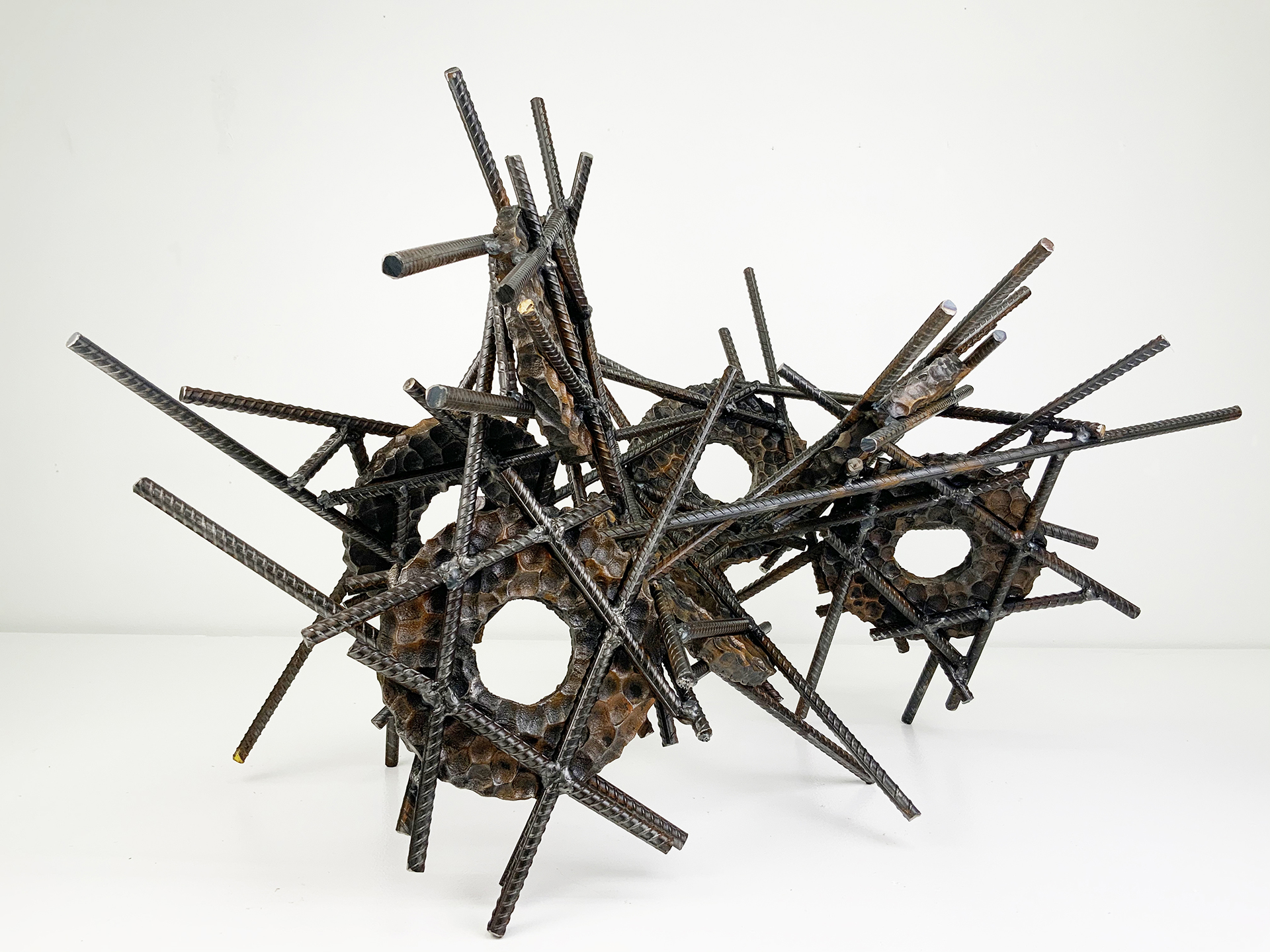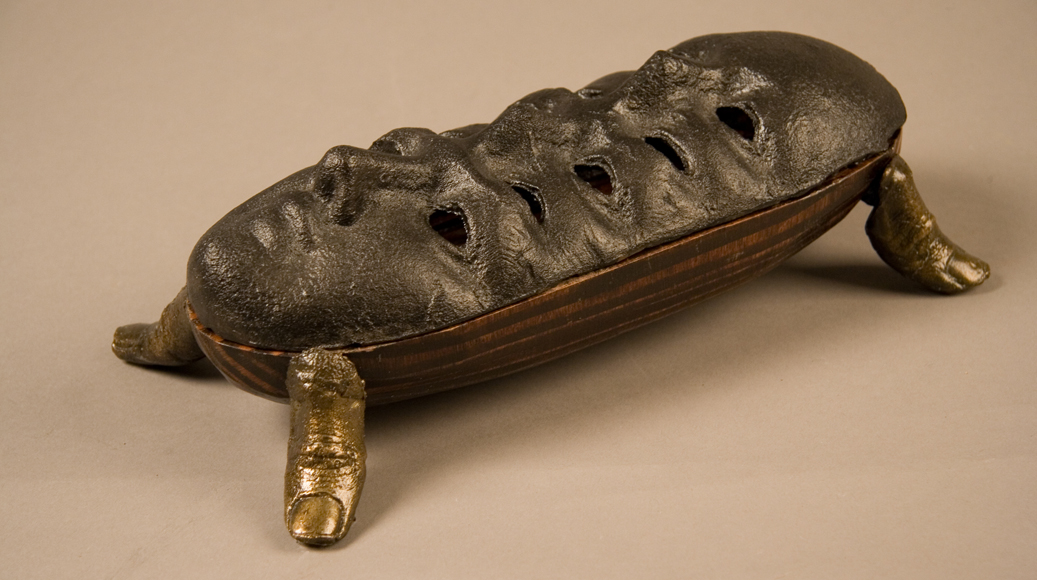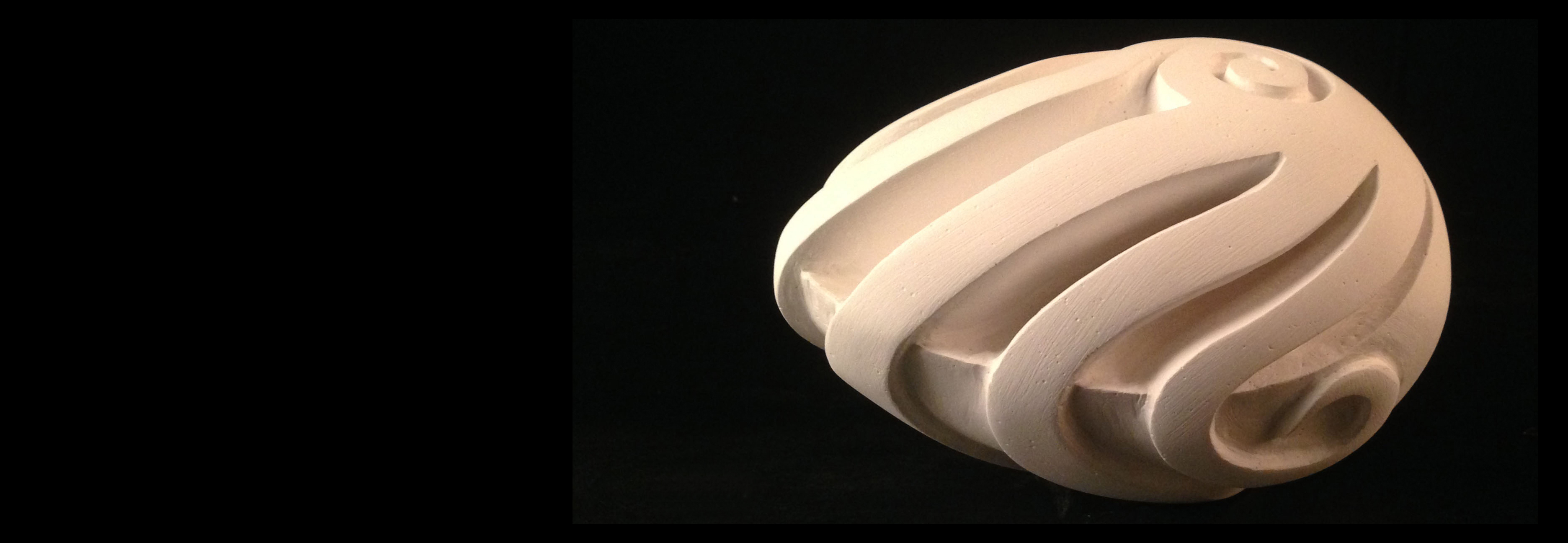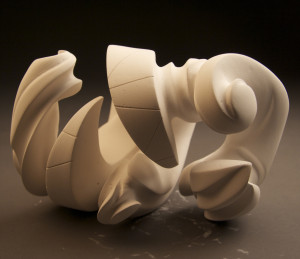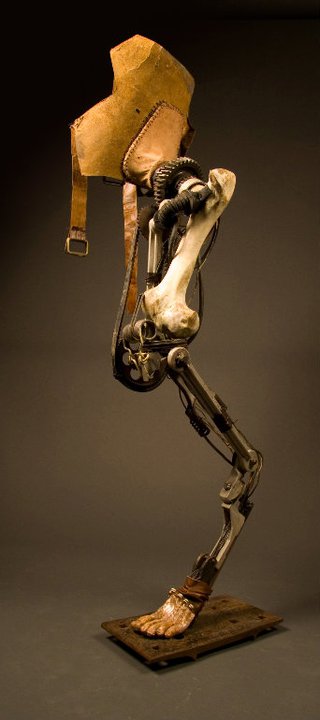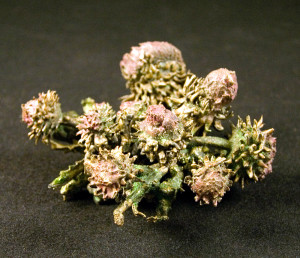 Mission: (Project Description)
Mission: (Project Description)
Hollow lost wax casting method: A unique wax pattern will be developed using plaster and rubber molds. The wax pattern will be taken through the “Lost Wax Process” to create a unique bronze or aluminum sculpture with a patina or alternative finishing method. Individual students have a choice to cast a wax form presented from a previous course or to create a new hollow casting for this project. A hollow lost wax casting method is the only technical criteria. If a new casting is to be produced, you are encouraged to create a composition and concept that pushes the envelope of this level course.
This project will challenge and further introduce the student to the processes of casting metal. A traditional investment material of plaster, silica sand and silica flour will be used for this project. The student should show an understanding of the methods listed below. A metal form will be cast and finished by the student.
